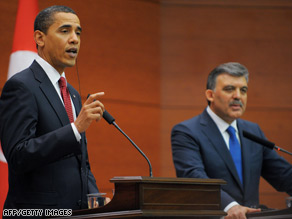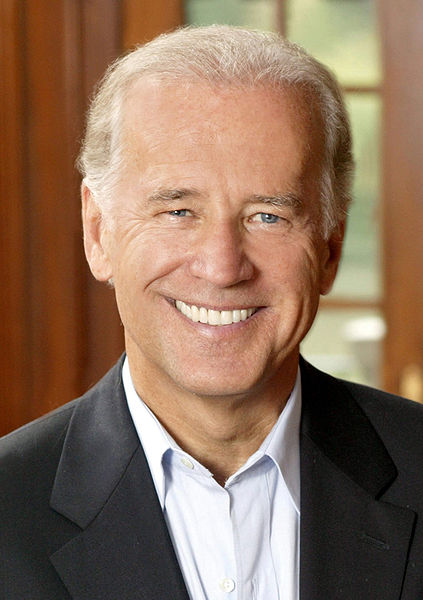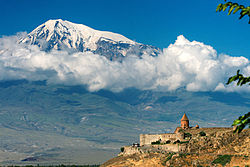Posted: 05:40 PM ET  President Obama and Turkish President Abdullah Gul hold a joint news conference Monday.
President Obama and Turkish President Abdullah Gul hold a joint news conference Monday.
Dave Schechter
CNN Senior National Editor
Armenian-Americans have April 24 circled on their calendars and they’ll be paying close attention to what President Obama says – or does not say – about that day.
Armenians call April 24 their day of remembrance, marking the day in 1915 that they say Turks began a campaign to destroy their community, a period of several years that resulted in deaths of between 1 million and 1.5 million Armenians.
The Armenians call it a genocide.
The Turks reject that language. From the Turkish perspective, there were killings, but on both sides of an ethnic conflict. World War I was underway, this was not a deliberate program to exterminate a people, the Turks say, and they claim that Armenians overstate the number of casualties.
“Race extermination” is what then-U.S. Ambassador to Turkey Henry Morgenthau Sr. called it in cables to the State Department. The word “genocide” itself did not enter the lexicon until some 30 years later.
This is a sensitive issue, not only for Americans of Armenian and Turkish descent, but also for U.S. foreign policy. For many of the more than 1 million Armenian-Americans, this is where the rubber of candidate Obama’s campaign promises meets the road of President Obama in the Oval Office.
As a senator and presidential candidate, Barack Obama repeatedly stated that the Armenian genocide is fact – not myth – and that he supported an oft-proposed but narrowly defeated Congressional resolution recognizing the slaughter as “the Armenian genocide.” In a Jan. 19, 2008, campaign statement, candidate Obama said, “As a senator, I strongly support passage of the Armenian Genocide Resolution (H.Res.106 and S.Res.106), and as President I will recognize the Armenian Genocide.” Those positions helped Obama win endorsements from Armenian-American organizations and community support measured at more than 80 percent.
But as President, he avoided use of the word “genocide” in front of his hosts during his recent trip to Turkey. “Well, my views are on the record and I have not changed views,” President Obama said during a news conference with Turkish President Abdullah Gul.
That left many Armenian-Americans wanting more. Obama “missed a valuable opportunity to honor his public pledge to recognize the Armenian genocide,” Aram Hamparian, executive director of the Armenian National Committee of America, told the Los Angeles Times.
To understand the passion of Armenian-Americans on this issue, consider this excerpt from a 2007 article by Michael Crowley in The New Republic: “Most Armenian-Americans are descended from survivors of the slaughter and grew up listening to stories about how the Turks, suspecting the Orthodox Christian Armenians of collaborating with their fellow Orthodox Christian Russians during World War I, led their grandparents on death marches, massacred entire villages, and, in one signature tactic, nailed horseshoes to their victims’ feet. . . Turkey’s refusal to acknowledge the guilt of their Ottoman forbears infuriates Armenians, leaving them feeling cheated of the sacred status awarded to Jewish Holocaust survivors.”
So Armenian-Americans anticipate April 24 and whether, now that he is in the White House, President Obama will repeat what he has said before about the Armenian genocide.
On that day, “the President has a well-timed opportunity to deliver on the change he promised, to honor the pledges he made and to affirm the U.S. record on the Armenian Genocide,” the Armenian Assembly of America said in a statement. “…we fully expect him to honor his pledge and affirm the historical truth of the Armenian Genocide. We encourage all people of goodwill to help us end the cycle of genocide denial by becoming an Ambassador of Affirmation and send a letter to President Obama,” the Assembly’s Executive Director Bryan Ardouny said in the statement.
President Obama will face the community’s expectations yet again if the House of Representatives votes in favor of a resolution recognizing the Armenian genocide, a resolution that has been introduced for several years and was re-introduced in March.
That resolution calls on the President to “accurately characterize the systematic and deliberate annihilation of 1,500,000 Armenians as genocide.”
The resolution’s primary backer is Rep. Adam Schiff, D-Calif., whose district includes the largest concentration of the nation’s roughly 1.5 million Armenian-Americans.
Crowley’s 2007 article dealt with the historical and diplomatic issues attached to the resolution and the money the Turkish government has spent to hire big-name Washington lobbyists, including former leaders of Congress, to lobby against the resolution.
“The resolution would be insulting to Turkey and would be very poorly received,” James H. Holmes, a retired U.S. ambassador who is now president of the American Turkish Council, told McLatchy newspapers. He added that “some very significant commercial opportunities” might be put at risk.
The U.S. government wants to maintain good relations with Turkey for reasons that include U.S. military basing in that country, Iraq as its next-door neighbor and its potential role in the Middle East peace process, as well as those trade considerations.
So keep watch on April 24 or thereabouts as Barack Obama finds himself caught between positions he’s repeated over the years and the challenges he faces as President of the United States.
Crowley, writing in The New Republic a couple of weeks ago, pointed out that it’s one thing to make such statements as a candidate and something altogether different to do so as President of the United States. “But the question is whether Obama reiterates those views in his official capacity. That’s what the Armenians have been desperate to see him to. And while there are sound arguments against inflaming the Turkish public with such an act, that is what Obama, as a candidate, explicitly promised he would do,” Crowley wrote.
In 1948, a United Nations convention defined genocide as acts “committed with the intent to destroy, in whole or in part, a national, ethnic, racial or religious group.” In 2009, President Obama might have to decide whether this definition fits what happened to the Armenians nearly a century ago.








